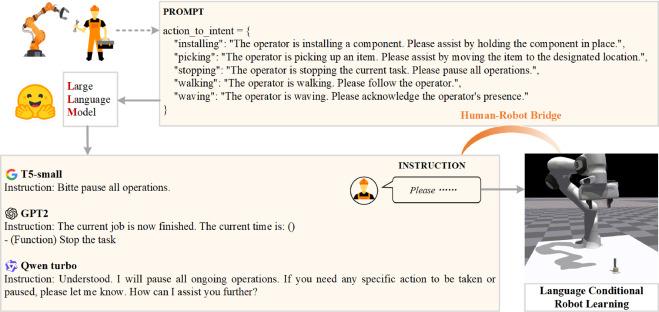Sudan’s Conflict Deepens: Regional Fallout and the Urgent Need for Coordinated Action
Rising Instability in the Horn of Africa: How Sudan’s War Affects Neighboring Countries
The intensifying conflict in Sudan has sent shockwaves throughout the Horn of Africa, significantly destabilizing adjacent nations. Countries including South Sudan, Chad, Egypt, and Ethiopia are confronting a surge of refugees fleeing violence, alongside escalating cross-border skirmishes and economic disruptions. Armed militias exploiting the chaos have heightened security concerns, raising fears that the conflict could ignite broader regional unrest.
The humanitarian strain on these countries is profound. Governments are compelled to tighten border controls while simultaneously managing the socio-economic pressures caused by accommodating displaced populations. For instance, South Sudan has seen its already fragile infrastructure overwhelmed by over 300,000 refugees, intensifying food insecurity and public service demands.
In response, regional policymakers are increasingly advocating for a unified strategy encompassing:
- Enhanced Diplomatic Collaboration: Facilitating dialogue among conflicting parties to de-escalate tensions.
- Coordinated Humanitarian Initiatives: Launching joint programs to support refugees and internally displaced persons (IDPs).
- Security Partnerships: Conducting combined operations to curb armed groups crossing borders.
The economic repercussions are equally significant. Trade routes have been disrupted, local markets strained by increased demand for essentials, and national budgets stretched thin trying to provide relief-all factors that risk deepening instability if left unaddressed.
Humanitarian Emergency Worsens: Managing Refugee Surges Amid Aid Deficits
The ongoing violence in Sudan has triggered one of the fastest-growing refugee crises in recent years. Neighboring states such as South Sudan, Chad, and the Central African Republic (CAR) face overwhelming challenges as they absorb tens of thousands seeking safety. Overcrowded camps struggle with inadequate shelter, limited food supplies, and insufficient healthcare services.
Main challenges exacerbating this crisis include:
- Competition over scarce resources intensifies tensions between refugees and host communities.
- Poor sanitation conditions increase vulnerability to disease outbreaks like cholera and malaria.
- Social friction rises as local populations contend with sudden demographic shifts.
International aid agencies warn that funding shortages severely hamper relief efforts. Logistical obstacles-such as difficult terrain and ongoing insecurity-further delay delivery of critical supplies. Political instability in neighboring regions complicates coordination among humanitarian actors, limiting access to vulnerable groups.
| Country | Refugee Population | Main Aid Deficiency |
|---|---|---|
| South Sudan | 300,000+ | Food Security |
| Chad | 254,000+ | Clean Water |
| Central African Republic | 50,000+ | Healthcare Services |
The Global Imperative: International Strategies to Mitigate Sudan’s Conflict Spillover
The ramifications of Sudan’s civil strife extend well beyond its borders, demanding a robust international response. Neighboring states face mounting pressure from refugee inflows and security threats along porous frontiers. To effectively contain this crisis, global actors must engage in a multi-faceted approach combining diplomacy, humanitarian support, and regional cooperation.
- Diplomatic Initiatives: Prioritize negotiations between warring factions to broker ceasefires and pave the way for peace talks.
- Adequate Humanitarian Funding: Scale up financial resources directed toward UN agencies and NGOs addressing urgent needs on the ground.
- Cohesive Regional Alliances: Foster partnerships among affected countries for intelligence sharing and joint security operations against militant groups exploiting instability.
An integrated framework should also focus on strengthening governance structures within border areas vulnerable to violence spillover. Monitoring mechanisms combined with peacekeeping deployments can help stabilize hotspots while supporting reconstruction efforts in war-ravaged communities.
| Intervention Type | Main Actors | Aimed Result |
|---|---|---|
| Peacekeeping Operations | United Nations & African Union | Create secure environments in conflict zones |
| Refugee Assistance Programs | Civil Society & Governments | Shelter provision & safe transit for displaced persons |
| Economic Recovery Aid | Bilateral Donors & Financial Institutions | Sustain post-conflict rebuilding initiatives |
A Critical Juncture: Navigating Toward Stability in East Africa
The protracted conflict in Sudan highlights the fragile nature of peace across East Africa. As violence escalates unabatedly within its borders-and refugees flood into neighboring countries-the risk of widespread destabilization grows ever more acute. The intertwined challenges of security threats and humanitarian emergencies require urgent attention from both regional leaders and the international community alike.
If decisive diplomatic engagement coupled with comprehensive aid strategies is not swiftly implemented, the consequences will reverberate far beyond Sudan itself-jeopardizing progress toward stability across an already vulnerable region. The coming months will be pivotal in determining whether collaborative efforts can halt this downward spiral or if conflict will continue to engulf multiple nations across the Horn of Africa.

